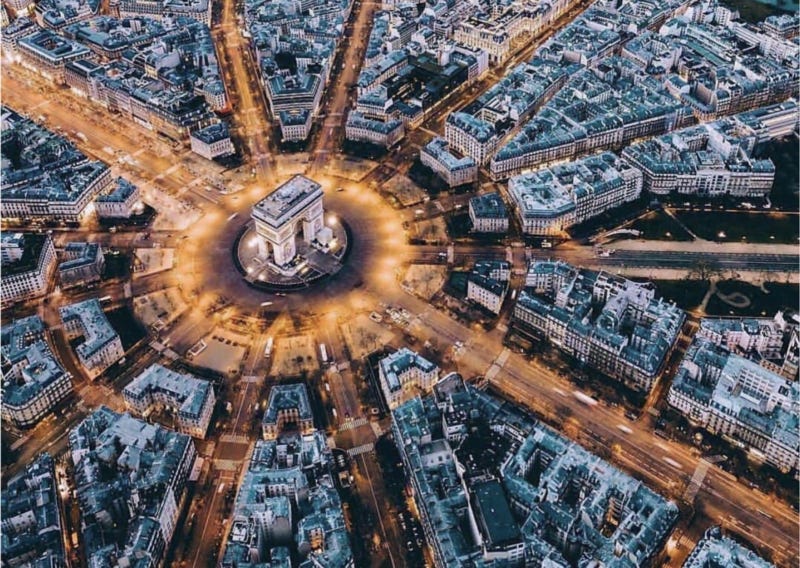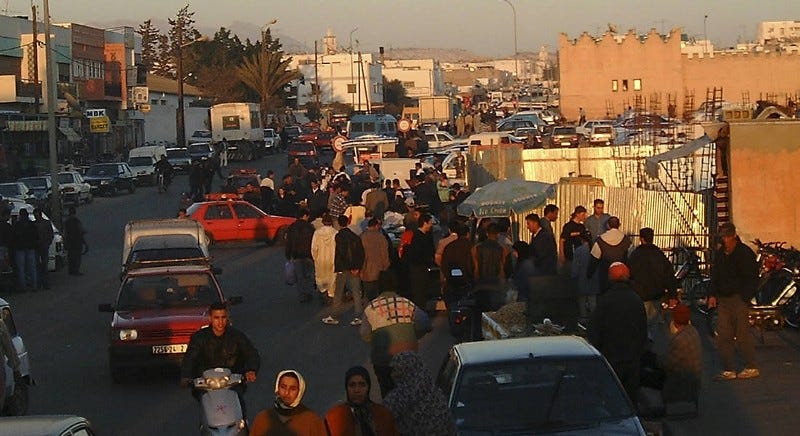Netflix’s culture, roundabouts and Moroccan drivers.
Freedom with responsibility vs strict rules. Exploring what Netflix, roundabouts and Moroccan drivers can teach us about moving fast.

As the world moved from 2021 to 2022, I read Reed Hastings and Erin Meyer’s “No Rules Rules” book about Netflix’s culture of Reinvention. Anyone who is aware of Netflix's culture knows a thing or two about how irreverent Reed and the whole team are. And as I finished their book, I found myself reflecting a lot on rules and their role in our lives.
Since we are born, and especially while we are young, we are taught a lot of rules. From our parents telling us all the time what to do and not to do. At school, teachers punish us if we don’t follow the rules. And at jobs that demand we wear certain clothes and do things in very specific ways. All these restrictions shape us to be used to living with rules and following them most of the time.
While I understand the benefits rules bring, they have always bothered me. I enjoy the freedom of being allowed some organized chaos. I have always believed some rules still exist because no one has ever questioned them. They are the norm. People are used to them. But they do not account for the downsides of existing. Most people follow them and no one dares to ask “What if …”.
Well, it turns out I’ve always loved the entire new world that comes after these “What ifs”. What if we actually question the rules?
“No cycling”
When I first came to London and started riding a bike more often, some public spaces rules bothered me a lot. The classic “No cycling” signs on the floor of some amazing public parks’ roads are such an example.
Here I am enjoying a nice bike ride through the park, I see this nice road and … No cycling? What? Why? Does this mean I have to go all the way around because I am on a bike? Do I have to get off the park and get on the actual street where cars also ride?
I know this rule exists on narrower paths to protect pedestrians from bike accidents. But what if there are no people walking? What if this route makes cyclists get faster to their destinations? What if cyclists always slow down when they ride next to people? What if foot traffic is never dense enough to turn bike accidents into something frequent? What if the chances of serious injuries are higher between bikes and cars than between bikes and people?
Peace and safety
One of the examples mentioned by Erin at the end of “No Rules Rules” is the Bde Maka Ska lake in Minneapolis. A crowded place in the summer months that yet feels peaceful. It feels peaceful because of rules. Because people can’t step on bike lanes. Anything with wheels can only be ridden on bike lanes. Bikes can only ride clockwise. People can’t swim past a certain lake area. And so on.
It doesn’t matter if you want to get an ice cream that is 20 meters behind you, you have to take the full 5 km route around the lake. It doesn’t matter if you are a good swimmer, you can only swim until the buoys. It’s a culture designed for peace and safety. It doesn’t account for freedom or speed or convenience. But it works.
The bright side of having no rules
On the other side of peace and safety, there is freedom. There is chaos and a lack of organization at a first glance. Yet, this is also where productivity, speed, and innovation can exist and thrive.
On a recent trip to Morocco with friends, we discovered Moroccan drivers rarely stop at zebra crossings. With an European background (i.e. used to following the rules), we found it a bit surprising at first. It was almost impossible to cross the road if you just stood there waiting for cars to stop and let you cross it. You had to be intentional about it. You had to literally start crossing it, put yourself in the middle of the road, and hope they would stop. Turns out they did. You simply had to go with the flow and get used to a new way of crossing the road.
After observing this driver's behavior for a while, we started joking about how this was their way of staying productive. As engineers, our minds jumped at thinking about a scenario where each driver stopped. And how many seconds each stop would represent. Multiply that by the number of cars and stops each would make, this would represent a lot of time wasted. A domino effect on the traffic would cause severe delays on the crowded Moroccan roads. Think of:
Bus and taxi drivers: who take people from A to B and get paid based on the number of trips they do. If you are a taxi driver and stopping means you can only do 6 trips a day instead of 8, that will hurt your wallet.
Passengers: who need to get to work, to the hospital, to the supermarket. Let’s say your work solves people’s problems and you usually help 20 people a day. Getting late to work means these 20 people’s lives will all get delayed or that you are only able to help 18.
Delivery drivers: who deliver groceries, medicines, and other goods. If your business needs fresh bread every day, a late bread delivery delays breakfast for all your customers. These people’s lives will also get delayed. You might even serve lunch later than usual because of it!
We hypothesized this culture of being intentional about crossing the road forces cars to only stop when people‘s desire to cross is higher than the driver’s to not stop. If you crossing in 5 minutes, when there is a gap in the traffic, is the same as you crossing now, why making 10 cars stop when you can wait 5 minutes?
This might not be the true explanation for it but it made sense to us at the time. This non-western driving style seems to assure speed is maintained on the road. It lowers the chances of creating traffic behind you. It keeps productivity high because urgency is prioritized. And things keep moving.
From Moroccan roads to French roundabouts
Roundabouts are another great example of organized chaos I’m borrowing from Reed and Erin’s book. As a driver, I’ve always loved and feared driving through big roundabouts. The fear comes when you are trying to get in and get out, but the excitement comes when you are driving around it.
In Paris, at the western end of the Avenue des Champs-Élysées, you find Place Charles de Gaulle. This is where the Arc du Triomphe is standing. And it also happens to be a huge and chaotic 12-intersection roundabout. Twelve independent roads converge and diverge at/from this point. With 10 invisible lanes (no marks on the pavement), you find buses, taxis, cars, motorcycles, and bicycles all living together here. They all very efficiently get in and out of the roundabout. There aren’t many rules to follow. Everyone knows how to navigate it. Everyone knows how priority works. Everyone knows how to get to where they want fast.
Now, imagine the city installed traffic lights at each entrance. And that those lanes were marked on the pavement. Cars would have to wait for their turn to get in and out. Vehicles would stick to their lane more often. Crashes would be rarer. Sure, it would be a safer place and there would be less chaos. But who says crashes are frequent? Who says it’s not safe enough already?
If one balances the pros and cons, these new rules slow things down too much. Traffic would build up when you force hundreds of cars to stop at the lights. The beautiful flexibility of the roundabout would be lost. People would be following rules that slow them down in a place where speed is everything.
A roundabout connecting 12 different roads is a place where you want things to move fast. A place where things should be flexible. Where choices should remain open for as long as possible. Got blocked by a bus and couldn’t get out where you wanted? No problem, take the next exit which is connected to your original one a bit further ahead. Or simply take another lap around the place and get out where you originally wanted to.
Freedom with responsibility
Roundabouts are the most efficient and flexible way to circulate on the road. There isn’t another road infrastructure that lets you change your mind so fast and still gets you to the place you wanted to go very fast. Yet, this works because there is a responsibility associated with driving in a roundabout. You have to know how they work. You have to understand how and why this freedom is possible.
Places like Netflix, where things must move fast, have to prioritize freedom over rules. Embracing freedom with responsibility allows organizations to fail fast and learn fast. People need the freedom to be disruptive, they need to be trusted to not follow the rules. They need to be allowed to ride a bike on a “No cycling” path. They need to be allowed not to stop at a zebra crossing. They need to be allowed a roundabout that keeps options open when they miss the right one. A place to come back to when they take the wrong exit. A place that allows them to have another shot when they fail.
Give freedom to your people but teach them the responsibility that comes with it. Trained them on how to use it but let them use it on their own. Let them fail, encourage them to fail, and let them try again. Do not punish freedom.
Freedom always comes with responsibility. Rules always come with limitations. Both have their advantages. The question is: do you want to be a french roundabout or a one-way clockwise only bike lane?





